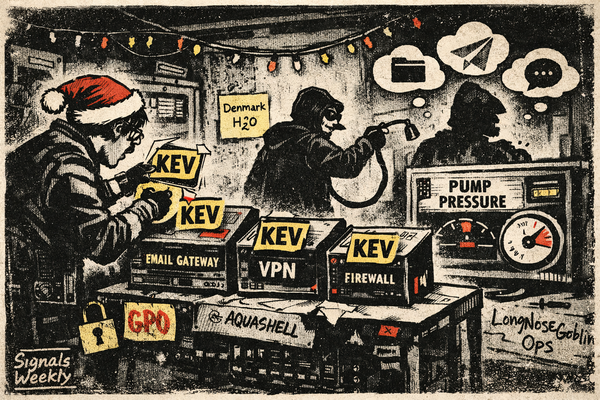Navigating the Cyber Threat Landscape: Protecting Educational Institutions in 2025
Russia targets these institutions due to geopolitical tensions, employing tactics like spear-phishing, ransomware, and supply chain attacks. China focuses on cyber espionage, aiming to steal intellectual property and research data through advanced persistent threats and credential harvesting.

TL;DR
- Top Threat Actors: Russia, China, and Iran are the primary nation-state actors targeting educational institutions.
- Common Tactics: Phishing, ransomware, and supply chain attacks are prevalent methods used by these actors.
- Cost-Effective Mitigations: Network segmentation, regular software updates, and enhanced incident response planning are key strategies.
- Future Outlook: Expect increased cyberattacks on educational institutions and a shift towards advanced cybersecurity measures.
- Recommendations: Focus on cybersecurity awareness, zero trust architecture, and advanced threat detection.
Summary
Nation-State Threats to Education
In 2025, educational institutions face significant cyber threats from nation-state actors, primarily Russia, China, and Iran. Russia targets these institutions due to geopolitical tensions, employing tactics like spear-phishing, ransomware, and supply chain attacks. China focuses on cyber espionage, aiming to steal intellectual property and research data through advanced persistent threats and credential harvesting. Iran, meanwhile, uses distributed denial-of-service (DDoS) attacks and web application exploits to gather intelligence and disrupt operations.
Cost-Effective Risk Mitigations
To counter these threats, educational institutions can implement several cost-effective risk mitigations. Network segmentation helps contain breaches by isolating network segments, while regular software and system updates patch vulnerabilities, reducing exploitation risks. Enhanced incident response planning ensures preparedness for cyber incidents, with tabletop exercises testing the effectiveness of these plans. These strategies leverage existing resources, minimizing financial investment while bolstering security.
Recommendations for Strengthening Cybersecurity
Educational institutions should enhance cybersecurity awareness and training programs, focusing on phishing recognition and data protection best practices. Transitioning to a Zero Trust architecture, which requires strict identity verification for all network access, can significantly reduce the attack surface. Investing in advanced threat detection solutions, such as AI-driven platforms, will improve incident response times and mitigate the impact of cyber incidents. Strengthening supply chain security through vendor risk assessments and compliance monitoring is also crucial.
Future Outlook and Regulatory Implications
In the short term, educational institutions will likely see an increase in cyberattacks from nation-state actors, driven by geopolitical tensions. This will prompt a shift towards adopting advanced cybersecurity measures, such as multi-factor authentication and AI-driven threat detection systems. In the long term, evolving tactics from these actors will necessitate continuous adaptation of security strategies. Additionally, regulatory bodies are expected to impose stricter compliance requirements, driving further investment in cybersecurity infrastructure and training to protect sensitive data and maintain operational integrity.
Research
Top 3 Nation-State Actors
-
Russia
- Why: Russia's cyber operations increasingly target educational institutions, especially amid geopolitical tensions like the Ukraine conflict. The education sector is a soft target for sensitive information and operational disruption.
- TTPs:
- Phishing Campaigns: Russian actors use spear-phishing emails to gain network access. For instance, Russian-aligned groups have targeted educational institutions with tailored phishing emails to harvest credentials.
- Ransomware: There's a rise in ransomware attacks, forcing institutions to pay ransoms to regain data access. A notable incident involved the University of Wisconsin, where cybercriminals stole sensitive records.
- Supply Chain Attacks: Russian groups exploit vulnerabilities in third-party vendors to infiltrate educational networks, as seen in attacks on institutions relying on external software providers.
-
China
- Why: China is known for cyber espionage, targeting universities and research institutions to steal intellectual property and sensitive research data. The focus on educational institutions aims to advance technological capabilities and gain strategic advantages.
- TTPs:
- Advanced Persistent Threats (APTs): Chinese state-sponsored groups, like RedJuliett, are linked to long-term cyber espionage campaigns targeting educational institutions, using sophisticated techniques for extended access.
- Credential Harvesting: Chinese actors use malware to capture login credentials, accessing sensitive systems. Reports indicate universities are specifically targeted for research data.
- Data Exfiltration: Techniques for transferring stolen data out of networks are refined, with Chinese groups often using encrypted channels to avoid detection.
-
Iran
- Why: Iran has increased its cyber capabilities, targeting educational institutions as part of a broader strategy to gather intelligence and retaliate against adversaries. The education sector is a valuable target for data theft and disruption.
- TTPs:
- DDoS Attacks: Iranian actors launch distributed denial-of-service attacks against educational institutions, disrupting online classes and resource access.
- Web Application Attacks: Exploiting vulnerabilities in educational websites is common, allowing Iranian hackers to access sensitive data.
- Ransomware Collaborations: Reports indicate Iranian threat actors collaborate with ransomware groups to target educational institutions, complicating the threat landscape.
Top 3 Cost-Effective Risk Mitigations
-
Implementing Network Segmentation
- Description: Dividing the network into smaller, isolated segments limits attack spread and protects sensitive data, containing breaches and minimizing damage.
- Cost Efficiency: Achievable using existing infrastructure, requiring minimal additional investment.
-
Regular Software and System Updates
- Description: Keeping software, operating systems, and applications up to date is crucial for patching vulnerabilities. Automated tools can manage updates efficiently.
- Cost Efficiency: Utilizing internal IT resources for regular updates significantly reduces exploitation risk without high costs.
-
Enhanced Incident Response Planning
- Description: Developing and regularly updating an incident response plan ensures preparedness for cyber incidents. Conducting tabletop exercises tests the plan.
- Cost Efficiency: Achievable using internal resources, requiring minimal financial investment, yet preparing the institution to respond effectively to incidents.
Recommendations, Actions, Suggested Pivots, Forecasts and Next Steps..
(Subscribers Only)





![[DEEP RESEARCH] Zero-Days Are a Distraction: 2025’s Biggest Losses Were Stolen Tokens + OAuth](/content/images/size/w600/2025/12/zz-3.png)